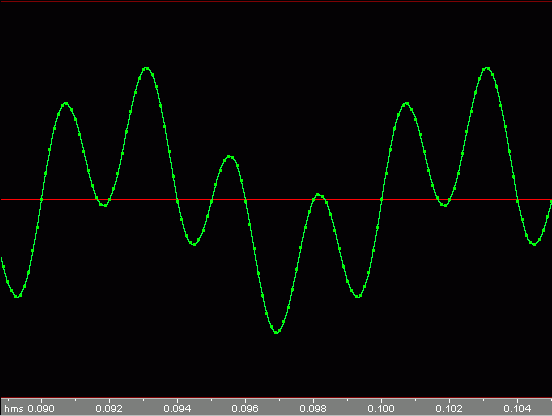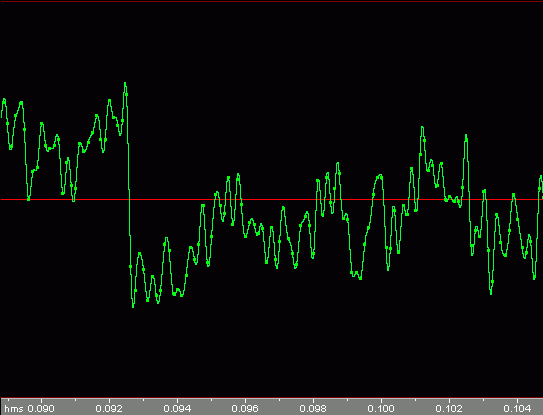|
Frequency
The frequency of an AC signal tells you how many full cycles of an AC waveform are generated in 1 second. It is expressed as a number of cycles per second or as a number of hertz (20 hertz, 1000 hertz, 20,000 hertz...). Standard AC mains voltage (generated in the USA) is 60 cycles per second which can be expressed as 60 hertz..
Wavelength:
One wavelength is the distance between corresponding parts of consecutive cycles of a sine wave. Lower frequencies have long wavelengths. High frequencies have shorter wavelengths. If we use 1,126.8 ft/sec as the speed of sound (the speed of sound varies with atmospheric pressure and temperature), we can calculate the wavelength (in feet) for any audio frequency.

Wavelength = 1,126.8/f
For a 20hz tone...
Wavelength = 1,126.8/20
The wavelength of a 20hz tone is 56.34 feet.
The speed of sound at sea level at 20°C. It can be changed if you wish.
Multiple Frequencies:
The diagram below shows 2 sine waves. The yellow sine wave is the lower frequency tone (notice its longer wavelength). The green waveform has a frequency which is 4 times as high. A speaker driven with the green sine wave would move back and forth 4 times as fast as a speaker driven by the yellow sine wave.

The previous diagram showed two sine waves. These were 2 pure tones overlaid on one another. If the 2 tones were mixed together and viewed with an oscilloscope, they would look like the following diagram. In this case the two waves are 100hz and 400hz. The two highest peaks correspond to the peaks of the 100hz sine wave. As you can see, the peaks are 0.01 seconds apart (as we will calculate a little later).

Audio Bandwidth:
The audio bandwidth is from 20 hertz to 20,000 hertz. This is generally considered to be the range of frequencies that a normal human can hear but there are few people that can hear the extreme ends of the spectrum well (if at all). This lack of sensitivity at high (treble) and low (bass) frequencies is worse at low volumes. This is why your system may sound a little short on bass and treble at low volume. Many head units have a loudness contour to make up for the lack of sensitivity at both ends of the audio spectrum.
Time vs Frequency:
You can also calculate time from frequency. If you have a 250hz sine wave, the time to complete one cycle is 0.004 seconds.
t = 1/f
t = 1/250
t = 0.004 seconds
Frequency vs Time:
The frequency is equal to the inverse of the time it takes to complete one cycle. If it takes 0.01 seconds to complete one cycle, the frequency of the sine wave is 100hz.
f = 1/t
f = 1/0.01
f = 100hz
This next link is a large file (160k+) and will take a few minutes to download. Please be patient.
Warning!
Set the volume control on your computer to approximately 10% of its maximum level before clicking on the links below. Adjust the volume as needed after the file has begun playing.
This link is a multi-tone .wav file. There are 6 different frequencies. They are 40hz, 100hz, 250hz, 500hz, 1000hz and 2000hz. Each lasts for 3 seconds. Be careful with the volume. The first tone is a very low frequency which your speakers may not be able to reproduce. If you turn the volume too loud at first, you may damage your speakers or get a really loud surprise when the next frequency starts.
This
link is pink noise .wav file.It is a 130k file so be patient.
The following is a sample of pink noise on the same scale as the multi-tone wave (100hz & 400hz). You can see that it is much more complex than the sample with only 2 tones.

|








